This article was co-authored by Jarod Carter, DPT, CMT. Jarod Carter is a Physical Therapist, Consultant, and the Owner of Carter Physiotherapy, a manual physical therapy clinic in Austin, Texas focused on manual therapy as well as telehealth services to resolve pain and injuries. Dr. Carter has over 15 years of professional physical therapy experience. He received a DPT (Doctor of Physical Therapy) and an MTC (Manual Therapy Certification) from the University of St. Augustine for Health Sciences. Dr. Carter also holds a BS in Kinesiology from the University of Texas at Austin.
There are 18 references cited in this article, which can be found at the bottom of the page.
This article has been viewed 30,772 times.
Lower back pain has a wide variety of causes. If you are experiencing lower back pain, you may have a degenerative condition, such as arthritis, or an acute injury, such as a fracture. Each condition has its own set of symptoms, so you may be able to rule out certain conditions by paying careful attention to your symptoms. If your pain persists, it's best to see a doctor for an official diagnosis.
Steps
Considering Common Causes of Minor Back Pain
-
1Think about recent trauma. If your body has recently been subjected to any kind of trauma, this may be the cause of your pain. Particularly if your pain started suddenly following the trauma, you are more likely suffering from an acute injury than from a degenerative condition.[1]
- Trauma can come in many forms, from having a fall or being involved in a car accident, to working too hard at the gym.
- Some acute injuries are minor and may heal on their own, but others are more serious. If your back pain does not begin to subside within a few days, see a doctor to ensure that you do not have an injury that requires medical intervention, like a fracture.
- Strains and sprains are the most common exercise-related injuries. They normally heal within a week with no medical intervention.[2]
-
2Assess your activity level. Sitting too much, particularly at a computer, can cause low back pain. While inactivity sometimes causes back conditions that necessitate medical intervention, the cure is often as simple as the cause. If you believe your back pain may be caused by sitting too much, try increasing your activity level to relieve it.[3]
- Try getting up for frequent walking breaks throughout the day. It’s important to get up from your desk at least once every 60 minutes. You can set reminders on your computer or watch to make sure that you stay on track
- If possible, get a standing desk so that you can work without sitting all day.
- If you can't move more during the day, try to improve your comfort by using lumbar support pillows or an ergonomically-designed chair.
- If increasing your activity doesn't improve your back pain, there may be something more serious going on, so it's a good idea to see your doctor.
Advertisement -
3Think about your sleeping habits. Sleeping the wrong way or on the wrong mattress can cause back pain. If you have bad sleep habits or need a new mattress, your back pain could be easily resolved.[4]
- Sleeping on your stomach is the worst position for back pain. Try flipping over on your back to see if you can get some relief. You may also want to put a pillow under your knees to see if that helps. You can also try sleeping on your side with a pillow in between your knees. If this does not relieve your back pain right away, don’t give up. You may need to experiment with the pillow height to find the best position for your lower back.
- Your mattress should be firm to support your back, but not so firm that you shoulders start to bother you. For most people, a medium-firmness mattress is ideal.
-
4Consider your footwear. Supportive shoes are very important for spinal health. If you frequently wear uncomfortable and unsupportive shoes, they may be the cause of your lower back pain.[5]
- Avoid wearing high heels, as they can cause your spine to be misaligned.
- If you wear flats, make sure they have some arch support to them. Flat shoes like flip flops can be just as bad for your back, if not worse, than high heels.
-
5Think about heavy items you carry. In some cases, back pain may be caused by carrying heavy items, especially for long periods of time. If you frequently carry heavy bags or other items, try to reduce their weight to see if this improves your condition.[6]
- Children often experience back pain from carrying backpacks that are too heavy. To avoid this, make sure your child's backpack weighs no more than 20% of his or her body weight.
-
6Think about your physical activities. Sometimes, back pain can be caused by too much activity, especially if you are not physically fit or if you exercise sporadically.[7] Think about whether your recent physical activities may be contributing to your back pain. For example, sports such as golf can require repetitive twisting motions, which can cause lower back pain.
- Running can also produce low back pain. Running on an uneven surface or on a track can also lead to other problems, such as pronated feet, which can disrupt proper muscle movements and cause pain all the way up to the back.
Considering Your Symptoms
-
1Consider the location and type of your pain. There are many different kinds of lower back pain.[8] Identifying the precise location of your pain, as well as the type of pain you are experiencing (shooting, burning, sharp, etc.), can help you identify the source of your pain. [9]
- Spondylolisthesis can cause pain in the low back, buttocks, and legs.[10]
- If you have sharp pain that is isolated to one side of the lower back, it may be caused by kidney stones.
- Sciatica causes pain and tingling in the low back, and usually in one leg and/or foot.
- Lumbar disc disease often causes a shooting or tingling pain in the back.[11]
- Fibromyalgia causes widespread pain in many different areas of the body, including the lower back.[12]
- Muscular pain from muscle knots can also cause local pain, or pain that radiates into the buttocks or upper thighs.
- However, keep in mind that back pain can be a complicated disorder and there are times when the symptoms may not fit the condition. That’s why it is important to have a full evaluation by your healthcare provider who can diagnose your condition and identify the cause of your lower back pain.
- It is better to get physical therapy before seeing a primary care doctor or a back surgeon.[13]
- A physical therapist can treat the cause of the back pain instead of only treating the symptoms.[14]
-
2Consider when you have pain. Different low back conditions may cause different positions or activities to be painful. Make note of when your pain began and what kinds of movements aggravate it, as well as what positions alleviate your pain.
- If your pain increases with standing, bending backward, and twisting, but decreases with bending forward, the source is likely the facet joints in your spine.
- If your pain started for no apparent reason and was accompanied by a popping sensation, you are likely suffering from sciatica.
- If the pain gets worse when you sit down, you may have a herniated lumbar disc.[15]
- If your pain increases with walking but decreases if you bend forward or sit down, then your pain may be caused by a stenosis, which is when the open spaces in your spine become narrow.[16]
- Pain that comes and goes throughout the day may be caused by a problem with one of the internal organs, such as the kidney or pancreas.[17]
-
3Pay attention to numbness and weakness. There are many different conditions that may cause numbness or weakness along with lower back pain. If you experience this, pay attention to the location and severity to help identify the cause.[18]
- Spondylolisthesis can cause weakness in the back and legs.[19]
- Spinal stenosis can cause weakness when walking.
- Sciatica often causes weakness in only one leg.
- Infections can cause generalized weakness, along with fever and chills.[20]
- Cauda equina syndrome, a serious spinal cord injury, can cause numbness between the inner thighs.[21]
-
4Notice stiffness. Some conditions that cause lower back pain may also cause muscles stiffness, which may make it difficult to move. If you have this symptom, it may be a clue that can help in your diagnosis.
Getting Medical Tests to Confirm Your Diagnosis
-
1Have a physical exam. When you see a doctor for back pain, the doctor will perform a complete physical exam, which will probably include a series of tests designed to help isolate the exact location of your pain. Depending on your symptoms, your doctor may administer one or more specially designed tests.
- The FABER test is used to diagnose sacroiliac joint disease. Your doctor will rotate your hip externally while you lie on your back. If you experience pain, your symptoms are coming from he sacroiliac joint.[24]
- The straight-leg test is used to diagnose herniated discs. Your doctor will raise your leg straight in the air while you are lying on your back. If you experience pain during this test, you most likely have a herniated disc.[25]
- Your doctor may ask you to bend backwards. This test is used to diagnose spinal stenosis, as those suffering from the condition will experience pain when bending backwards.[26]
-
2Have blood work done. Your doctor will most likely want to run laboratory tests on your blood as well. While this kind of test may seem unusual, it is actually very important. Blood work is done to rule out underlying conditions that may be contributing to your back pain, such as infections.[27]
-
3Get an x-ray. An x-ray is often one of the first tests a doctor will order to help identify the source of a patient's back pain. This test uses radiation to obtain an image of the bones inside the body.[28]
- X-rays are useful for diagnosing conditions that can be seen in the bones, such as fractures and bone spurs. They are not used for diagnosing conditions related to the soft tissue.
- Be aware that an x-ray is just part of what your doctor will use to find a diagnosis for your condition. An x-ray alone will not usually provide answers about your condition. There are many people with degenerative changes on x-rays who do not have any pain. Disc degeneration, facet joint osteoarthritis, or osteophytes are present in nearly 90 percent of people over the age of 64.[29]
-
4Get an MRI or CT scan. If your doctor believes that your back pain may be caused by a problem in the body's soft tissue, you will probably be sent for an MRI or a CT scan. Both of these technologies are able to take images of the soft tissue, including ligaments, cartilage, and spinal discs.[30]
- MRIs and CT scans are useful for diagnosing conditions such as herniated discs, spinal stenosis, and degenerative joint disease. However, your doctor will use your MRI or CT results in combination with your other findings to come to a logical conclusion about your diagnosis. Findings on an MRI should not be cause for concern. Studies have shown that 52 to 81 percent of asymptomatic individuals have evidence of a bulging disc.[31]
-
5Get a bone scan. Although not as common as other imaging technologies, bones scans are sometimes used to take a closer look at your bones. This technology utilizes a small amount of radioactive material that is injected into the patient's body prior to imaging.[32]
- Bone scans are especially useful for diagnosing tumors, as well as osteoporosis.
-
6Get an EMG. If you have symptoms such as numbness or shooting pain, your doctor may order an EMG. This test measures electrical activity in your body to help diagnose nerve damage or nerve compression.[33]
- Nerve damage and compression can be caused by many different things, including herniated discs and spinal stenosis. An EMG will not identify the source of the nerve damage, but it will help your doctor understand how the underlying condition is affecting the rest of your body.
Expert Q&A
-
QuestionShould I get physical therapy before seeing a primary care doctor or a back surgeon for lower back pain?
 Jarod Carter, DPT, CMTJarod Carter is a Physical Therapist, Consultant, and the Owner of Carter Physiotherapy, a manual physical therapy clinic in Austin, Texas focused on manual therapy as well as telehealth services to resolve pain and injuries. Dr. Carter has over 15 years of professional physical therapy experience. He received a DPT (Doctor of Physical Therapy) and an MTC (Manual Therapy Certification) from the University of St. Augustine for Health Sciences. Dr. Carter also holds a BS in Kinesiology from the University of Texas at Austin.
Jarod Carter, DPT, CMTJarod Carter is a Physical Therapist, Consultant, and the Owner of Carter Physiotherapy, a manual physical therapy clinic in Austin, Texas focused on manual therapy as well as telehealth services to resolve pain and injuries. Dr. Carter has over 15 years of professional physical therapy experience. He received a DPT (Doctor of Physical Therapy) and an MTC (Manual Therapy Certification) from the University of St. Augustine for Health Sciences. Dr. Carter also holds a BS in Kinesiology from the University of Texas at Austin.
Physical Therapist Research shows it is better to get physical therapy before seeing a primary care doctor or a back surgeon for lower back pain. Usually, they tell you to take muscle relaxers, anti-inflammatories, and rest. After that, if you continue to have pain, they ask you to try physical therapy. You may wonder why the pain medications are not helping you. The reason is, they are treating the symptoms and not treating the cause of the symptoms. That is where a physical therapist can step in, in a way that a primary care doctor or a back surgeon cannot.
Research shows it is better to get physical therapy before seeing a primary care doctor or a back surgeon for lower back pain. Usually, they tell you to take muscle relaxers, anti-inflammatories, and rest. After that, if you continue to have pain, they ask you to try physical therapy. You may wonder why the pain medications are not helping you. The reason is, they are treating the symptoms and not treating the cause of the symptoms. That is where a physical therapist can step in, in a way that a primary care doctor or a back surgeon cannot.
Warnings
- Self-diagnosing your condition may cause more harm than good. If your symptoms are severe or persist for more than a few days, see a doctor right away.⧼thumbs_response⧽
- There are many less common causes of back pain as well, including cancer, aneurysm, and uterine fibroids.[34]⧼thumbs_response⧽
References
- ↑ https://www.healthlinkbc.ca/health-topics/bacpn
- ↑ https://www.mayoclinic.org/diseases-conditions/sprains/diagnosis-treatment/drc-20377943
- ↑ https://health.clevelandclinic.org/no-joke-your-desk-job-promotes-dead-butt-syndrome/
- ↑ https://health.clevelandclinic.org/sleep-position-causing-back-pain/
- ↑ http://www.fitnessmagazine.com/health/injury/back/back-pain-causes-and-treatments/
- ↑ http://www.ninds.nih.gov/disorders/backpain/detail_backpain.htm#3102_3
- ↑ http://www.ninds.nih.gov/disorders/backpain/detail_backpain.htm#3102_3
- ↑ Jarod Carter, DPT, CMT. Physical Therapist. Expert Interview. 11 June 2020.
- ↑ http://www.ninds.nih.gov/disorders/backpain/detail_backpain.htm#3102_3
- ↑ https://my.clevelandclinic.org/health/diseases/10302-spondylolisthesis
- ↑ https://www.hss.edu/conditions_in-depth-overview-low-back-pain.asp
- ↑ https://www.hss.edu/conditions_in-depth-overview-low-back-pain.asp
- ↑ Jarod Carter, DPT, CMT. Physical Therapist. Expert Interview. 11 June 2020.
- ↑ Jarod Carter, DPT, CMT. Physical Therapist. Expert Interview. 11 June 2020.
- ↑ https://www.hss.edu/conditions_in-depth-overview-low-back-pain.asp
- ↑ http://www.spine-health.com/conditions/spinal-stenosis/spinal-stenosis-symptoms-and-diagnosis
- ↑ https://www.hss.edu/conditions_in-depth-overview-low-back-pain.asp
- ↑ http://www.ninds.nih.gov/disorders/backpain/detail_backpain.htm#3102_3
- ↑ https://www.nhs.uk/conditions/spondylolisthesis/
- ↑ https://www.hss.edu/conditions_in-depth-overview-low-back-pain.asp
- ↑ https://www.hss.edu/conditions_in-depth-overview-low-back-pain.asp
- ↑ https://www.nhs.uk/conditions/spondylolisthesis/
- ↑ https://www.hss.edu/conditions_in-depth-overview-low-back-pain.asp
- ↑ https://www.ncbi.nlm.nih.gov/books/NBK470299/
- ↑ http://orthoinfo.aaos.org/topic.cfm?topic=a00534
- ↑ https://www.hss.edu/conditions_in-depth-overview-low-back-pain.asp
- ↑ http://www.mayoclinic.org/diseases-conditions/back-pain/basics/tests-diagnosis/con-20020797
- ↑ https://www.niams.nih.gov/health-topics/back-pain#tab-diagnosis
- ↑ http://www.ncbi.nlm.nih.gov/pubmed/2146754
- ↑ http://www.mayoclinic.org/diseases-conditions/back-pain/basics/tests-diagnosis/con-20020797
- ↑ http://www.ncbi.nlm.nih.gov/pubmed/8208267
- ↑ http://www.mayoclinic.org/diseases-conditions/back-pain/basics/tests-diagnosis/con-20020797
- ↑ http://www.mayoclinic.org/diseases-conditions/back-pain/basics/tests-diagnosis/con-20020797
- ↑ https://www.nlm.nih.gov/medlineplus/ency/article/007425.htm
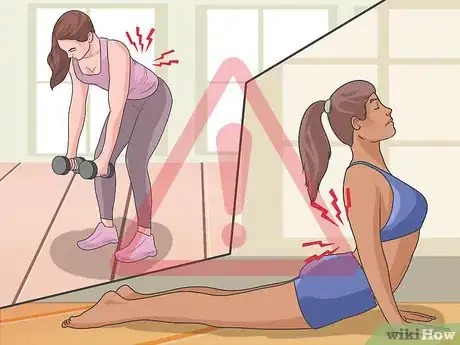
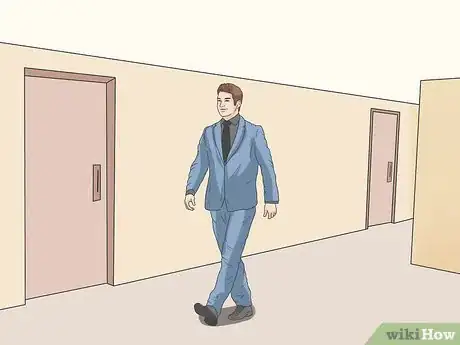
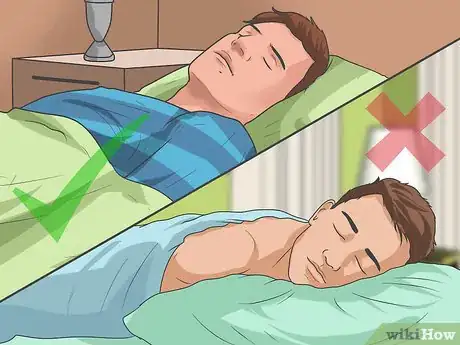

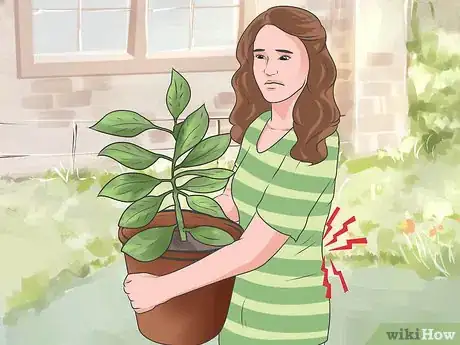

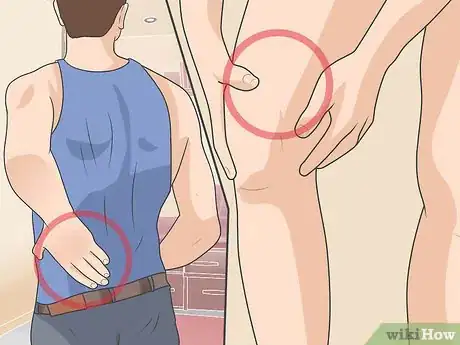

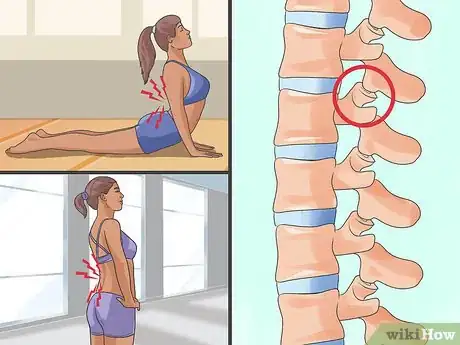
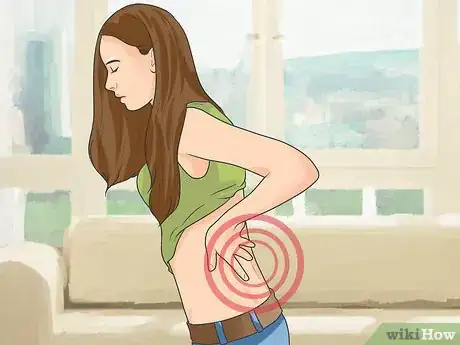
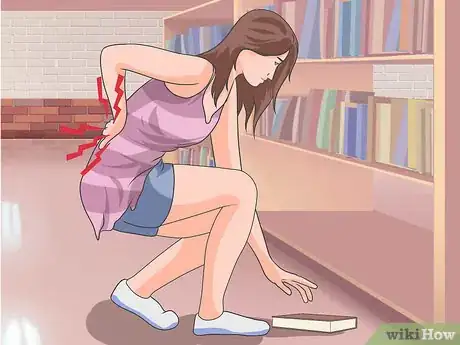
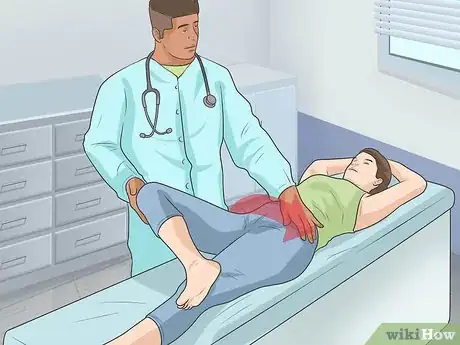

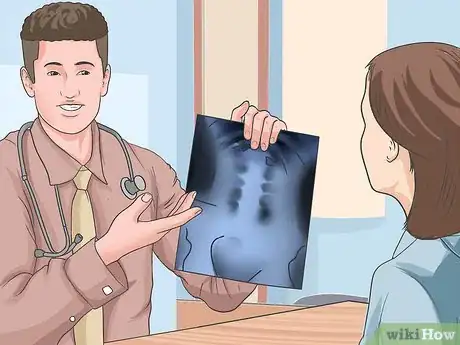
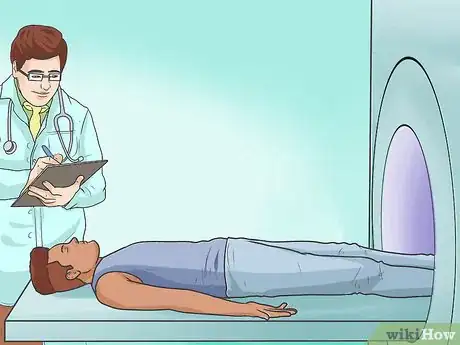
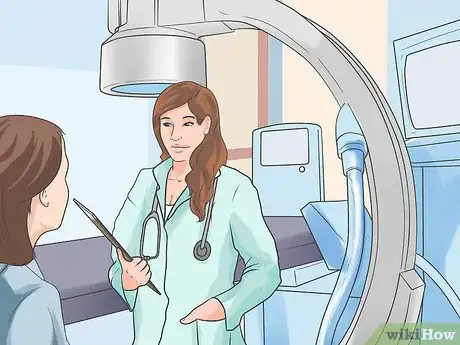
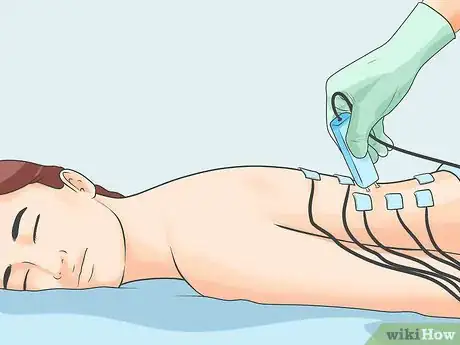
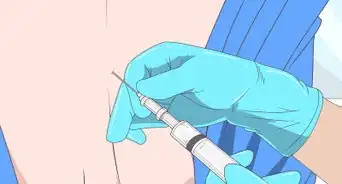
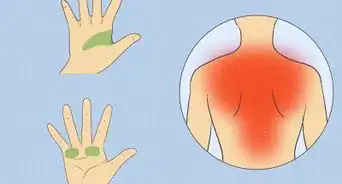
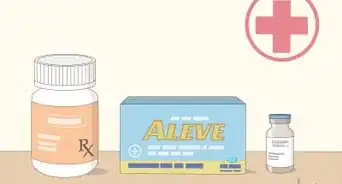
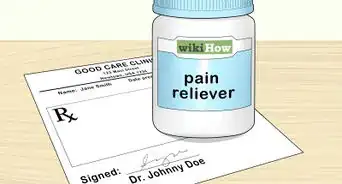
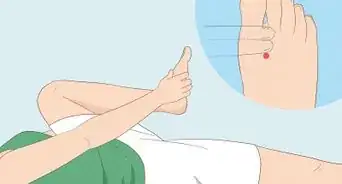
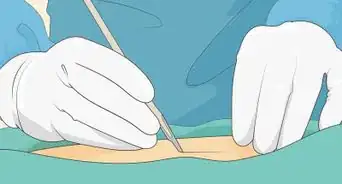
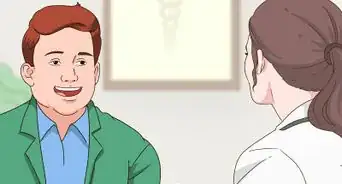
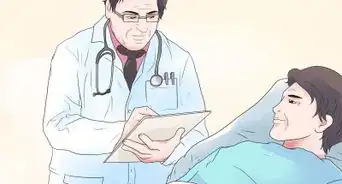
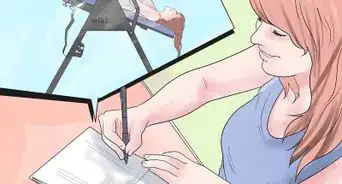
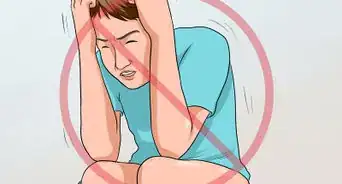


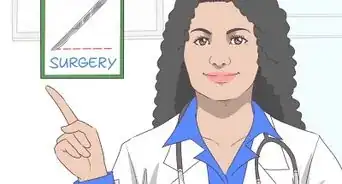
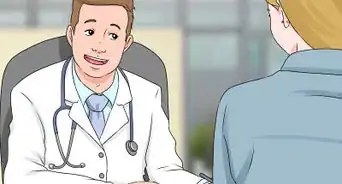







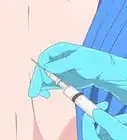
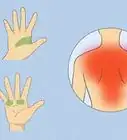
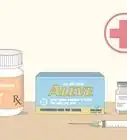




































Medical Disclaimer
The content of this article is not intended to be a substitute for professional medical advice, examination, diagnosis, or treatment. You should always contact your doctor or other qualified healthcare professional before starting, changing, or stopping any kind of health treatment.
Read More...